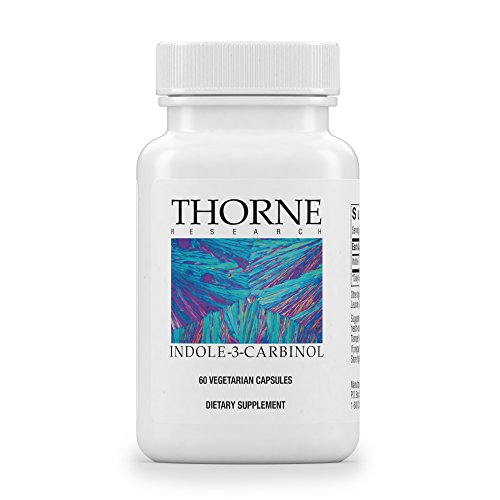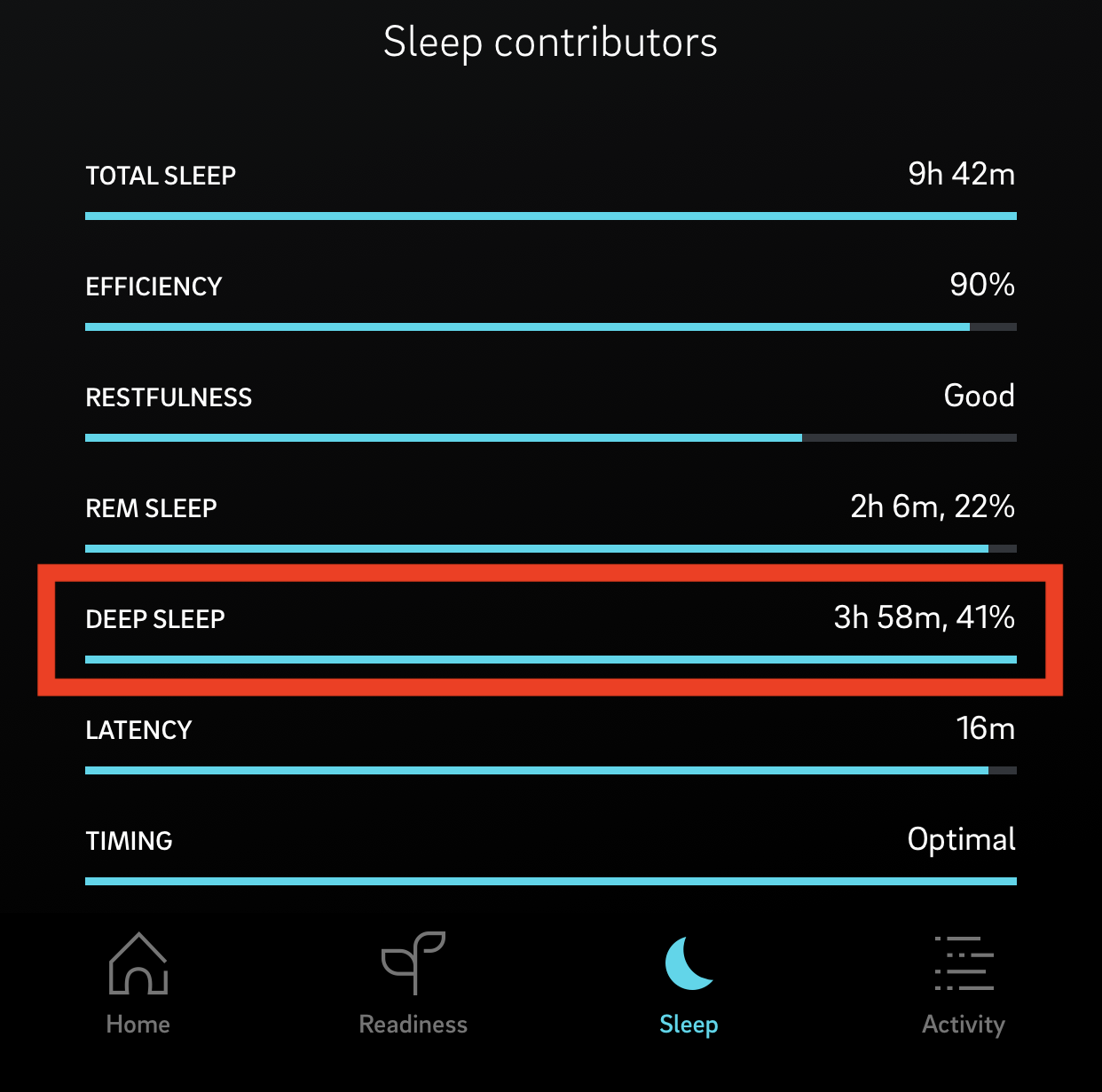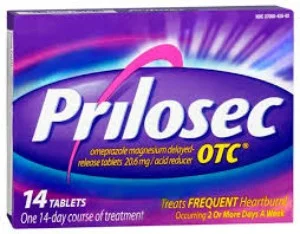What "Haptens" After Losing Tolerance?
Many of my chemically sensitive clients have reactions from inhaling, eating, and skin/air contact with chemicals.
Haptens' effect on the immune system supports why they can wear a gas mask in a perfumey room and still get sick.
I haven't seen anyone else online talking about haptens and I've noticed that a lot of my allergies and chemical sensitivities have improved by reducing my hapten exposure.
In study models, haptens can be used in to induce food intolerance, chemical sensitivities, skin disease, and autoimmunity.
In this post, we will discuss the how haptens may have detrimental effects in humans.
Contents:
TLDR
Too Long, Didn't Read (TLDR):
Haptens can activate the immune system spontaneously (without a carrier protein) or via Cross-linkage (needs a carrier protein such as proteins, lipoproteins, polysaccharides or other large molecules in order to become antigenic). R R
Haptens are inhaled, ingested, or come into contact with the skin. R
Once the body has generated antibodies to a hapten-carrier adduct, haptens themselves may bind to the antibody, creating an immune response. R
Multiple haptens may cluster together and create a bigger antibody response (this is useful for vaccines, but may put those with hapten sensitivity on overload) R
Haptens may drive autoimmunity with their ability to create antibodies R R R
For example, haptens can bind to tight junction proteins creating antibodies against them and may cause intestinal permeability while also binding to LPS making neuroinflammation and endotoxemia worse. R R R
Being Th17 dominant (having high IL-17 or IL-25 levels) increases symptoms to hapten sensitivity R R
They modify lectin and mannose binding R
Haptens have the ability to induce chemical sensitivities, atopic dermatitis (eczema), GI problems (food intolerance and allergy), urticaria (via mast cells), anemia, CNS changes (such as hyperactivity), alcohol intolerance R R
Haptens either work in the skin and give you skin disease or work internally and give you autoimmune like conditions, but typically not both (patients with atopic dermatitis have heightened oral tolerance to dietary haptens) R
Short term, lower doses of haptens may not cause any problems, BUT long term or high dose hapten exposure may cause sensitization and immune problems. R R
Some essential oils have prehaptens that autoxidize (oxidize from air exposure) that then turn into haptens
It is still not known why we react to some haptens and not others.
What Are Haptens?
The term hapten is derived from the Greek haptein, meaning “to fasten".
A hapten is any chemical that have a molecular weight lower than 1 kDA (<1000 Daltons).
Haptens were not very common until the past hundred years when we started to manufacture and create our own chemicals (a new environment with man-made things).
There is a high correlation between haptens in the environment and the rise in new allergies. R R
Common belief is that since haptens are so small, they do not directly induce antibody response and need to bind to a large protein (some examples of conjugated proteins are via serum globulin, albumins, ovalbumin, poly-L-glutamic acid, polysaccharides and liposomes). R R
On top of that, once the immune system is primed for a class of haptens, it no longer needs the carrier proteins for haptens to bind as an antigen.
Some studies have shown there are exceptions, and thus haptens may activate the immune system without the need for a larger carrier protein. R
Methods Of Hapten Conjugation (Haptenization):
Examples Of Haptens And Hapten-Binding Conjugates
There are over 10k haptens, so here are the ones I think are the most prominent/noteworthy:
Additives - Citric Acid, Benzoates, Disulphides, Sulphates, Sulphur dioxide and sulphites, aspartame, artificial colors, MSG, disodium EDTA, xanthan gum R
Air Pollution R
Antibiotics - Beta-Lactams (penicillin) R
Chemicals - Dinitrophenol, formaldehyde, toluene diisocyanate, trimellitic anhydride, phthalic anhydride, some benzene ring-containing compounds, ethylene tetrachloride, ethylene oxide R
Drugs - Apresoline; also Ipilimumab (anti-CTLA4), Pembrolizumab (anti-PD-1) and Nivolumab (anti-PD-1) are used inhibit T cell immune-tolerant states and can cause hapten-induced autoimmunity R
Dyes - Fluorescein; Red 1 and 6; in food, in hair coloring, etc R R
Estrogenics - certain ones such as bisphenol-A (BPA), Octachlorostyrene (from PVC) R R
Metals (esp when oxidized)- Cobalt, Gold, Mercury, Nickel R R
Oxidized Fish Oil R
Pesticides, Insecticides, Fungicides, and Organophosphates R
Plant Toxins - Urushiol (poison ivy), Essential Oils (such as cinnamaldehyde and tea tree), Thiocyanate
Sugar Alcohols - Mannose intolerance seems to be common R R
Synthetic Peptides R
Toxins R
Vitamins - Biotin, fluorescein, digoxigenin, and dinitrophenol R
VOCs - VOCs may also act as haptens by binding to endogenous proteins and sending signals to activate immune system R R R
Fat soluble haptens can get into cells easier.
Benefits Of Haptens
1. Cancer
Haptens may be very beneficial for skin-related cancers. R R
Chemotherapy drugs may synergize with folate-hapten–targeted immunotherapy to reduce tumor growth. R
Haptens can also be used to create certain cancer vaccines. R
2. Vaccines
Haptens can create a higher IgG immune response, which may be beneficial for creating effective vaccines. R R
Some vaccines are being developed with haptens to combat drug addictions (e.g. cocaine, opioids, nicotine etc) and food cravings (e.g. ghrelin-haptens) as it may help cross the blood-brain barrier (BBB). R R R R
3. Hormone Signalling
Some hapten hormones have beneficial homeostatic properties, such as Vitamin D and thyroid hormones (T3 and T4). R R
Symptoms Of Hapten Sensitization
Aggression and Hyperactivity - from swelling of the central nervous system (CNS) structures R
Atopic Dermatitis (Eczema and Ichthyosis) - filaggrin barrier defects make it worse R R R
Blood Pressure Drop - from degranulation of a large number of mastocytes due to ionic disturbances R
Chemical Sensitivities and Environmental Intolerance R
Fatigue R
Feeling hot, even in cooler environments (personal experience)
Histamine Problems (and intolerance symptoms) R
Migraine Attacks - even more prominent in children after consumption of chocolate, cocoa and sweets - may be is explained by the low level of maturity of enzymatic systems in children, reduced ability of binding compounds to plasma proteins, and the ability of low-molecule compounds to penetrate a blood-brain barrier R
Skin hyperaemia R
Tachycardia R
Urticaria - from destruction of mastocytes and basophils R
Testing For Hapten Sensitivity
Detection of IgG and/or IgM antibodies against formaldehyde, trimellitic anhydride, phthalic anhydride and benzene ring compounds is an indication of chronic exposure to these chemical haptens. R
Based on many case reports, if you have delayed hypersensitivity reactions, haptens may be the culprit. R R
Common cytokines after chronic exposure:
Haptens And Chemical Sensitivity
Usually, haptens do not cause an immune response, and that may be one reason why those without chemical sensitivities do not react from chemicals. R
Haptens in around 90% of the population get detoxed, and in the other 10%, haptens either bind to a protein to induce an immune response or directly interact with the immune system creating antigens. R
Those who are sensitive to haptens may be sensitive to other small chemicals and have Chemical Sensitivities and/or Fragrance (Perfume) Sensitivity.
Since haptens are so small they can get through the skin very easily.
Haptens are notorious for causing skin-induced contact sensitivity (sensitization) and is a useful way to test for atopic dermatitis with chemicals and fragrances.
For example, prehaptens from essential oils can auto-oxidize and become haptens, which then can cause sensitization of the skin.
Haptens, Autoimmunity, And Food Intolerance
Haptens may make you create antibodies towards your own self if they bind with your own proteins (theory).
For example, nicotine-based haptens are used to combat addiction by creating anti-nicotine antibodies. R
1. Autoimmunity From Drugs
Some haptens can induce autoimmune disease. R
For example, hydralazine (blood pressure-lowering drug) can occasionally can produce drug-induced lupus erythematosus in certain individuals. R
This may be the mechanism by which the halothane (anesthetic) can cause life-threatening hepatitis, as well as the mechanism by which penicillin-class drugs cause autoimmune hemolytic anemia. R
2. Haptens, Intestinal Permeability, And Food Intolerance
Case reports have shown that the synergistic effect of multiple hapten exposures with stress can to abnormal mucosal immune function and the breakdown in immunological tolerance to dietary proteins and peptides. R
This may be because when haptens bind to food proteins or human tissue proteins, they can open tight junctions and elicit an immune response.
For example, after use of antibiotics (causing dysbiosis) or anesthetics, the body may make antibodies to tight junctions in the gut, thus causing intestinal permeability (leaky gut). R
Haptens can also bind with food and human tissue, entering circulation and trigger an autoimmune response. R
Haptens can also bind to Lipopolysaccharides (LPS) and create a greater antibody response. R R
The ability for LPS bind with haptens and create antibodies is more problematic with those with susceptible HLA or dysbiosis, and is less problematic in those with immune tolerance (roughly 70-90% of the population). R
Having increased intestinal permeability allows for the development of food intolerances as well as other sensitivities (such as lectin sensitivity).
Haptens, Allergies, And Lectin Sensitivity
Haptens may increase the risk of developing food IgE (allergy) or IgG (intolerance) responses. R
Similar to lectins, haptens are able to induce allergic reactions directly because of their similarity to protein-bound sugar (mannose). R
Haptens directly compete with lectins for binding to glycans. R
Haptens can also create complexes with lectins (such as the potato or pea hapten-lectin complex). R R
Dissimilar to lectins, haptens do not use molecular mimicry but bind to things that activate Toll-Like Receptors (TLRs, specifically TLR2, TLR4, TLR6, and TLR9) and nucleotide-binding oligomerization domain (NOD) like receptors (NLRs). R R R
In those with celiac disease, the hapten complex of transglutaminase 2 (TG2) and gluten peptides by TG2-specific B cells may result in activation of gluten-specific T cells which subsequently provide help for the B cells to secrete autoantibodies. R
Haptens After Tregs Loss
Haptens are a very common driver of problems after infections (such as Lyme, CIRS, mold, dysbiosis, candida, etc). R
For example, aflatoxin (mycotoxin) is a known hapten that binds to human tissue, causing an autoimmune response. R
Haptens may be part of the reason why some people can be both Th1 and Th17, but over time may become more Th2 dominant (as well as have histamine intolerance and/or mast cell problems) via the "danger limitation effect". R
Haptens also can increase Suppressor of Cytokine Signalling 3 (SOCS3) expression, thus promoting more Th2 dominance (especially in the skin). R R
Losing Tregs makes all of this worse and can help predispose you to hapten sensitivity. R
Other Harms Of Haptens
Alcohol Intolerance - Those that are sensitive to haptens may have adverse allergic-like reactions to alcohol. It has been shown that individuals with severe hypersensitivity reactions to ethanol have elevated levels of circulating anti-acetaldehyde– protein IgE antibodies... In these studies, the acetaldehyde moiety has been shown to be acting as a hapten. R
Anhedonia and Depression - possibly through TLR4 activation and LPS binding R
Arthritis R
Autism Spectrum Disorders - the immunotoxins causes “activation” of the immune system leading to the production of autoantibodies against haptens R
Cancer R
Change in neurotransmission (via Mannich reaction) - haptens can be made to bind to neurotransmitters and biogenic amines such as tryptamine, serotonin, 5‐hydroxy‐indole acetic acid (5-HIAA), melatonin, tyramine, dopamine, dihydroxyphenyl acetic acid (DOPAC), norepinephrine, glycine, glutamate, glutamine, and GABA. R
Dampened Immune System - Haptens may also block immune responses through "hapten inhibition" and cause the immune system not to respond to foreign invaders. R
Decreased Sun Protection from UV (in those genetically predisposed) R
Inflammatory Bowel Disease (IBD) R
Liver Failure R
Vision Loss - Haptens generated from oxidized DHA can cause age-related macular degeneration (AMD) R
What To Do If You Are Sensitive To Haptens
Avoidance And Regulation
Avoid Exposure - Avoid all exposure to unnecessary haptens and properly handle chemicals (no megadoses or prolonged exposure).
Binding and Chelation - depending on the type of hapten, it may be necessary to bind/chelate it - e.g. mercury
Dysbiosis - Avoid anything that can induce dysbiosis, such as antibiotics, glyphosate, etc, as they can open up tight junctions allowing for LPS + haptens to create autoimmunity and food intolerance. R
Immune Tolerance - Avoid factors that can decrease immune tolerance as those with immune tolerance are significantly less likely to developing sensitivity to haptens. R R
Proper redox - NRF2 dysfunction can allow haptens to cause problems with antioxidant status. R R
Fixes
alpha-Melanocyte-stimulating hormone (alpha-MSH) - can induce hapten-specific tolerance (in skin) R
Antihistamines (Histamine H1 + H4 receptor antagonists) - helps with hapten-induced scratching and inflammation R
Astragalus - protects against hapten-induced colitis. R
Bitter Leaf (Vernonia amygdalina) - prevent and improve atopic/eczema dermatitis syndrome R
Butyrate - sodium butyrate (injected and topically) could prevent hypersensitive skin reaction from haptens R
Dietary Indoles such as I3C and DIM - may help increase immunotolerance to haptens R
Glutathione - reduces inflammation in sensitized skin R
H2S therapy - reduces inflammation, restores the microbial biofilm, and increases the production of mucus granules R
IGF-1 - reduces hapten-induced inflammation R
Increase IL-10 R
Increase Tregs - hapten sensitivity is highly dependent on regulatory t-cell status R
Lactobacillus casei - exerts protective effects on T cell–mediated skin inflammation by increases in FoxP3+ Tregs R
LXR activation R
PPARα activation R
PXR activation R
Topical Corticoids R
Vasoactive Intestinal Polypeptide (VIP) - helps with hapten induced arthritis and colitis R
Genes That Make You More Susceptible To Haptenation
...will come back to this soon with more SNP information if possible.
DNFB
Soluble factors in tolerance and contact sensitivity to 2,4-dinitrofluorobenzene in mice. III. Histocompatibility antigens associated with the hapten dinitrophenol serve as target molecules on 2,4-dinitrofluorobenzene-immune T cells for soluble suppressor factor. R
Induction of tolerance to 1-fluoro-2,4-dinitrobenzene contact sensitivity with hapten-modified lymphoid cells. II. Selective tolerance in F1 mice of T cell subsets recognizing 1-fluoro-2,4-dinitrobenzene associated with parental major histocompatibility complex antigens. R
H-2 restriction of suppressor T-cell induction by hapten-modified lymphoid cells in tolerance to 1-fluoro-2,4-dinitrobenzene contact sensitization. R
HNOX-1 (heme nitric oxide/oxygen)
NQa1
SLIT2
Expression of Slit2 in skin has been reported to be upregulated at both 4 hours and 48 hours following hapten sensitization, suggesting Slit2 can have a role both early and late in an inflammatory response. R
Other Mechanisms Of Haptens
Simple:
Increases B Defensins R
Increases CCL1 R
Increases CCL5 R
Increases CXCL2 R
Increases CXCL-10 R
Increases C5a R
Increases E-selectin R
Increases Fibrinogen R
Increases FnEDA+ R
Increases GM-CSF R
Increases Heparin Sulfate R
Increases ICAM-1 R
Increases IFNγ R
Increases IgM R
Increases IL-1β R
Increases IL-4 R
Increases IL-17 R
Increases IL-18 R
Increases NLRP3 R
Increases PGE2 R
Increases P-selectin R
Increases ROS R
Increases Serotonin R
Increases Tenascin R
Increases TLR2 R
Increases TLR4 R
Increases TLR6 R
Increases TLR9 R
Increases TNFα R
^most of these are from acute exposure
Advanced:
Early on
γδ-T cells can recognize haptens and mount a hapten-specific immune response stimulated release of IL-17. R
Contact hypersensitivity
Sensitization - Hapten application induces strong innate immune mechanisms, causing cell death and the release of danger signals and endogenous ligands, leading to cytokine release, IL-1β, IL-18, TNFα, and GM-CSF, by keratinocytes (KC). This release will stimulate dermal antigen-presenting cells (dAPCs), langerhans cells, and dermal dendritic cells, to take up haptenated antigen and migrate to the dLN to activate naïve T-cells. Mast cells will aid in this migration by releasing TNFα. iNKT cells in the liver will be activated by APCs presenting haptenated glycolipid by CD1d. This will cause cytokine release, IL-4, to stimulate naïve B-1 cells in the peritoneal cavity, along with the binding of hapten-antigen by membrane IgM. This will cause migration of these cells to the dLN, and subsequent maturation into CS-initiating B-1 cells, which release antihapten IgM into circulation. R
Early phase - Hapten challenge will restimulate iNKT cells to release IL-4, which along with hapten-antigen will stimulate CS-initiating B-1 cells. These cells will release IgM, which will bind to hapten-antigen. This will cause formation of C5a, triggering activation of mast cells to produce TNFα and serotonin, increasing immune cell trafficking into the area and TNFα and CXCL2 to stimulate neutrophils in the dermis R
Drug-induced hypersensitivity
Most drugs are small molecules and are by themselves, not immunogenic. During the haptenization process, these small molecules bind to carrier proteins to form a complete immunogenic complex. The hypersensitivity reaction then requires the activation and maturation of dendritic cells (DCs), which will then drive the activation of specific T cells. DCs are antigen-presenting cells (APC) that play a central role in the initiation and regulation of adaptive immune responses. Following the contact with antigens, DCs undergo a process of maturation associated with the expression of several co-stimulatory molecules on the membrane such as CD80, CD86 and CD40, various adhesion molecules (CD2, CD11a, CD54, CD58), and secrete different cytokines, including IL-1β and IL-8. Once activated, DCs migrate into the regional lymph node or in the spleen, where they present antigen to specific T lymphocytes, through MHC class II molecules and co-stimulatory adhesion molecules expressed on both DC (i.e., CD86) and T cell (i.e., CD28) to ensure the necessary contact to achieve full T-cell activation. Following stimulation, a clone of T cells is produce with the ability to react to the antigen, resulting in the clinical manifestation of HDR. R
Prohaptens and Prehaptens
Prohaptens are chemicals that are not protein reactive unless they are metabolically activated to electrophilic species. It has also been proposed that prohapten chemicals that undergo air oxidation to reactive species be classified separately as prehaptens, but the criteria on when a chemical is a pro- or prehapten is confusing...Bioactivation of prohaptens commonly involves oxidative processes, with the cytochrome P450 system (CYPs) playing a major role in the biotransformation of the majority of prohaptens to sensitizers. CYP enzymes that have been detected at the mRNA level in the skin include CYP1A1, 1B1, 2B6, 2E1, and 3A5...Once bioactivated to an electrophilic species, haptenation of proteins proceeds via one of the previously discussed mechanisms. R R
Microbiome and Bile regulation
Secondary bile acids, such as DCA and LCA, regulate the immune system, in part, through their receptors, such as TGR5 (also called GPBAR1 or M-BAR) and two nuclear receptors, FXR and PXR. Animals deficient in TGR5 develop more severe colitis induced by T cell-activating haptens (TNBS and oxazolone). R
Haptens and Redox Status
The majority of occupationally related haptens are reactive, electrophilic chemicals, or are metabolized to reactive metabolites that form covalent bonds with nucleophilic centers on proteins. Nonelectrophilic protein binding may occur through disulfide exchange, coordinate covalent binding onto metal ions on metalloproteins or of metal allergens, themselves, to the major histocompatibility complex. Recent chemical reactivity kinetic studies suggest that the rate of protein binding is a major determinant of allergenic potency; however, electrophilic strength does not seem to predict the ability of a hapten to skew the response between Th1 and Th2. R







































